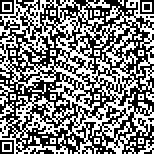| 引用本文: | 杨锟,董云山,司风琪.仿生表面减磨特性的数值模拟研究[J].材料科学与工艺,2021,29(1):1-8.DOI:10.11951/j.issn.1005-0299.20200043. |
| YANG Kun,DONG Yunshan,SI Fengqi.Numerical simulation of anti-erosion characteristics with bionic surface[J].Materials Science and Technology,2021,29(1):1-8.DOI:10.11951/j.issn.1005-0299.20200043. |
|
| 摘要: |
| 为探究颗粒冲蚀作用下的仿生表面减磨特性,基于沙漠蝎表面抗蚀结构,确定凹槽、凸包和凹槽+凸包3种形式的仿生表面,采用数值模拟方法计算其磨损率分布规律,并分析仿生结构对流场和颗粒场的影响。结果表明:在颗粒入射角小于70°时,3种仿生表面均有减磨效果,其中凹槽结构减磨效果显著,但凹槽表面两侧磨损率略微增大,引入凸包结构后磨损率减小21%,凹槽+凸包表面在入射角为45°时达到最佳减磨效果,磨损率降低65.3%;凸包结构对流场影响有限,而凹槽结构内形成大尺度涡结构,对流场影响较大;各仿生表面的颗粒碰撞角度略微降低,其中凸包表面影响最大;颗粒碰撞速度均下降,降低幅度随颗粒入射角度增大而减小,其中凹槽+凸包表面影响最大;磨损率峰值从入射角30°改变至45°,两者颗粒碰撞角度均在35°左右,而45°下颗粒碰撞速度是30°下的1.4倍。 |
| 关键词: 仿生 表面结构 冲蚀磨损 减磨机理 数值模拟 |
| DOI:10.11951/j.issn.1005-0299.20200043 |
| 分类号:TB17 |
| 文献标识码:A |
| 基金项目:国家自然科学基金资助项目(51976031). |
|
| Numerical simulation of anti-erosion characteristics with bionic surface |
|
YANG Kun,DONG Yunshan,SI Fengqi
|
|
(Key Laboratory of Energy Thermal Conversion and Control, Ministry of Education(Southeast University), Nanjing 210096, China)
|
| Abstract: |
| In order to study the anti-erosion characteristics of bionic surface, groove surface, bump surface and groove-bump surface were extracted based on the desert scorpion. The erosion rate distribution was studied by numerical simulation method, and the change of the flow field, as well as the particle field was also analysed. The results indicate that all bionic surfaces are effective in anti-erosion when the impact angle is less than 70°. The groove structure has a significant effect on erosion, while the erosion rate of the region between two grooves is higher than the smooth surface. The erosion rate of these regions decreases 21% after introducing the bump structure. The groove-bump surface has the best friction reduction effect at 45°, and the erosion rate is reduced by 65.3%. The bump structure has a limited effect on the flow field, while a large-scale vortex structure is formed in the groove structure, showing a greater impact on the flow field compared with the former one. The impact angle of each bionic surface is slightly reduced at lower impact angle, and the change is larger at the higher impact angle, and the bump plate has the largest influence. The impact speed decreases among bionic surfaces, while the influence is greater at lower angle, and the groove-bump plate has the largest impact. Under the influence of the boundary layer, the peak value of the erosion rate changed from 30° to 45°. It is found that the impact angle of both conditions is about 35°, which is the maximum theoretical wear rate, but the impact speed of 45° is 1.4 times that of 30°. |
| Key words: bionic surface surface structure erosive wear anti-erosion mechanism CFD |






